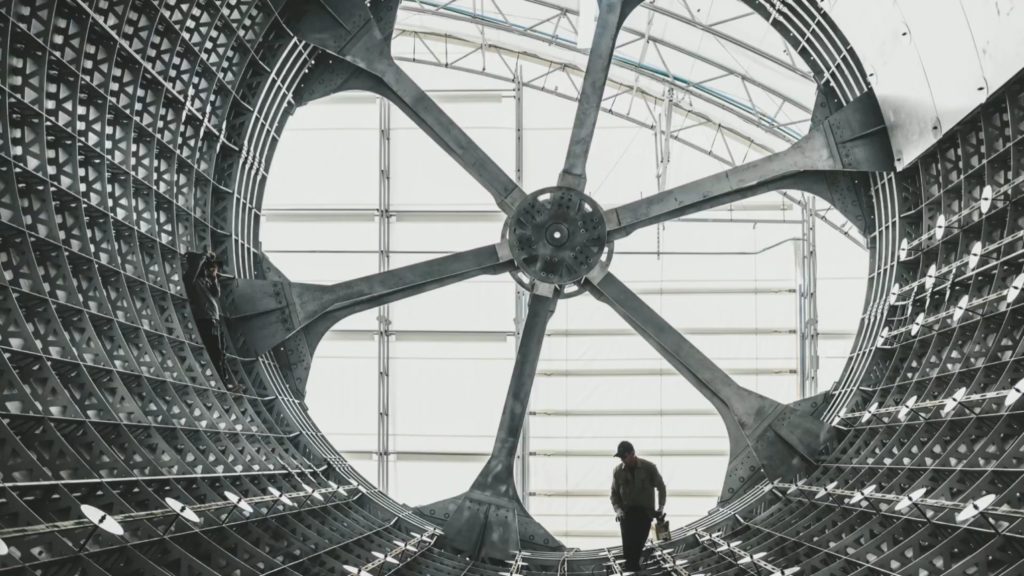

News
SpaceX kicks off $750M investment round as BFR and Starlink infrastructure needs grow
Reuters reports that SpaceX has moved forward with an effort to raise capital through a leveraged loan and is now circulating a debt investment opportunity 50% greater than originally reported by Bloomberg.
With the maximum capital raise now capped at $750M with Bank of America in place of Goldman Sachs as the loan guarantor, SpaceX could rapidly find itself flush with funds that will be instrumental in the completion of major infrastructure expansion projects for its Starlink satellite constellation and next-gen BFR rocket and spaceship.
SpaceX is out with price talk on its $750m loan and it's in the L+400-425 range. w/ @KristenHaunss – https://t.co/WCFlWpEhjS
— Jonathan Schwarzberg (@theschwarzberg) November 7, 2018
Particularly noteworthy is the fact that SpaceX – according to sources that spoke with Reuters – is playing their financial cards very close to the chest, presumably suggesting that interested investors are being faced with extreme secrecy over the company’s finances, assuming they are being allowed much access at all. Given how gilded and relatively exciting SpaceX is, investors may be more than willing to shrug off the inherent high-risk, high-reward nature of commercial spaceflight and swallow an unusual burden of secrecy and opaque corporate insight.
Assuming that SpaceX is able to successfully secure enough investors to raise the full $750M, this offering could mark a turning point in the way SpaceX approaches major capital expenditures, particularly at a point in time where the company is likely to imminently require massive amounts of cash to prevent major schedule delays for both Starlink and BFR. With more than two years and a full 35 successful launches separating SpaceX from their last catastrophic failure, the company’s financial outlook – at least from an external perspective – is healthier than its ever been, and the manner with which Falcon 9 has rapidly devoured a majority of the global commercial launch industry is extremely promising.
- An unofficial analysis of SpaceX’s first ~1600 Starlink satellites. (Mark Handley)
- One of the first two prototype Starlink satellites separates from Falcon 9’s upper stage, February 2018. (SpaceX)
- A closeup of BFS’ nose section, featuring impressively varied tile-sizes, joining methods, and extremely precise curves on the interface between canard wings and the hull. (SpaceX)
- SpaceX’s BFR mandrel, a tool used to form the rocket’s largest composite structures. (SpaceX)
Further, SpaceX hopes to lower the average cost of rocket launches by at least one or two magnitudes with the introduction and optimization of the next-gen BFR rocket, while its prospective Starlink satellite constellation has the potential to disrupt an unbelievably vast and stagnant global communications market. In order to even begin to make either or both aspirations real, SpaceX will need to construct wholly new production, test, and launch facilities capable of manufacturing an unprecedented number of satellites (between ~4400 and ~12000) and supporting what would be the largest and most advanced commercial rocket ever built.
Altogether, these many towering challenges will demand major investments in infrastructure with no real guarantee of returns. If the market will bear it (and it seems to be more than willing), leveraged loans – essentially debt equity backed by large banks or institutions – is one of the best possible ways to raise large amounts of money for risky prospects, particularly for a company as successful and glamorous as SpaceX. With any luck, investors will be luxuriously rewarded for going out on a relative limb.
For prompt updates, on-the-ground perspectives, and unique glimpses of SpaceX’s rocket recovery fleet, check out our brand new LaunchPad and LandingZone newsletters!
News
Tesla begins Robotaxi certification push in Arizona: report
Tesla seems serious about expanding its Robotaxi service to several states in the coming months.

Tesla has initiated discussions with Arizona transportation regulators to certify its driverless Robotaxi service in the state, as per a recent report from Bloomberg News. The move follows Tesla’s launch of its Robotaxi pilot program in Austin, Texas, as well as CEO Elon Musk’s recent comments about the service’s expansion in the Bay Area.
The Arizona Department of Transportation confirmed to Bloomberg that Tesla has reached out to begin the certification process for autonomous ride-sharing operations in the state. While details remain limited, the outreach suggests that Tesla is serious about expanding its driverless Robotaxi service to several territories in the coming months.
The Arizona development comes as Tesla prepares to expand its service area in Austin this weekend, as per CEO Elon Musk in a post on X. Musk also stated that Tesla is targeting the San Francisco Bay Area as its next major market, with a potential launch “in a month or two,” pending regulatory approvals.
Tesla first launched its autonomous ride-hailing program on June 22 in Austin with a small fleet of Model Y vehicles, accompanied by a Tesla employee in the passenger seat to monitor safety. While still classified as a test, Musk has said the program will expand to about 1,000 vehicles in the coming months. Tesla will later upgrade its Robotaxi fleet with the Cyercab, a two-seater that is designed without a steering wheel.
Sightings of Cybercab castings around the Giga Texas complex suggests that Tesla may be ramping the initial trial production of the self-driving two-seater. Tesla, for its part, has noted in the past that volume production of the Cybercab is expected to start sometime next year.
In California, Tesla has already applied for a transportation charter-party carrier permit from the state’s Public Utilities Commission. The company is reportedly taking a phased approach to operating in California, with the Robotaxi service starting with pre-arranged rides for employees in vehicles with safety drivers.
News
Tesla sets November 6 date for 2025 Annual Shareholder Meeting
The automaker announced the date on Thursday in a Form 8-K.

Tesla has scheduled its 2025 annual shareholder meeting for November 6, addressing investor concerns that the company was nearing a legal deadline to hold the event.
The automaker announced the date on Thursday in a Form 8-K submitted to the United States Securities and Exchange Commission (SEC). The company also listed a new proposal submission deadline of July 31 for items to be included in the proxy statement.
Tesla’s announcement followed calls from a group of 27 shareholders, including the leaders of large public pension funds, which urged Tesla’s board to formally set the meeting date, as noted in a report from The Wall Street Journal.
The group noted that under Texas law, where Tesla is now incorporated, companies must hold annual meetings within 13 months of the last one if requested by shareholders. Tesla’s previous annual shareholder meeting was held on June 13, 2024, which placed the July 13 deadline in focus.
Tesla originally stated in its 2024 annual report that it would file its proxy statement by the end of April. However, an amended filing on April 30 indicated that the Board of Directors had not yet finalized a meeting date, at least at the time.
The April filing also confirmed that Tesla’s board had formed a special committee to evaluate certain matters related to CEO Elon Musk’s compensation plan. Musk’s CEO performance award remains at the center of a lengthy legal dispute in Delaware, Tesla’s former state of incorporation.
Due to the aftermath of Musk’s legal dispute about his compensation plan in Delaware, he has not been paid for his work at Tesla for several years. Musk, for his part, has noted that he is more concerned about his voting stake in Tesla than his actual salary.
At last year’s annual meeting, TSLA shareholders voted to reapprove Elon Musk’s compensation plan and ratified Tesla’s decision to relocate its legal domicile from Delaware to Texas.
Elon Musk
Grok coming to Tesla vehicles next week “at the latest:” Elon Musk
Grok’s rollout to Tesla vehicles is expected to begin next week at the latest.

Elon Musk announced on Thursday that Grok, the large language model developed by his startup xAI, will soon be available in Tesla vehicles. Grok’s rollout to Tesla vehicles is expected to begin next week at the latest, further deepening the ties between the two Elon Musk-led companies.
Tesla–xAI synergy
Musk confirmed the news on X shortly after livestreaming the release of Grok 4, xAI’s latest large language model. “Grok is coming to Tesla vehicles very soon. Next week at the latest,” Musk wrote in a post on social media platform X.
During the livestream, Musk and several members of the xAI team highlighted several upgrades to Grok 4’s voice capabilities and performance metrics, positioning the LLM as competitive with top-tier models from OpenAI and Google.
The in-vehicle integration of Grok marks a new chapter in Tesla’s AI development. While Tesla has long relied on in-house systems for autonomous driving and energy optimization, Grok’s integration would introduce conversational AI directly into its vehicles’ user experience. This integration could potentially improve customer interaction inside Tesla vehicles.
xAI and Tesla’s collaborative footprint
Grok’s upcoming rollout to Tesla vehicles adds to a growing business relationship between Tesla and xAI. Earlier this year, Tesla disclosed that it generated $198.3 million in revenue from commercial, consulting, and support agreements with xAI, as noted in a report from Bloomberg News. A large portion of that amount, however, came from the sale of Megapack energy storage systems to the artificial intelligence startup.
In July 2023, Musk polled X users about whether Tesla should invest $5 billion in xAI. While no formal investment has been made so far, 68% of poll participants voted yes, and Musk has since stated that the idea would be discussed with Tesla’s board.
-

 Elon Musk1 week ago
Elon Musk1 week agoTesla investors will be shocked by Jim Cramer’s latest assessment
-

 Elon Musk3 days ago
Elon Musk3 days agoElon Musk confirms Grok 4 launch on July 9 with livestream event
-

 Elon Musk14 hours ago
Elon Musk14 hours agoxAI launches Grok 4 with new $300/month SuperGrok Heavy subscription
-

 News7 days ago
News7 days agoTesla Model 3 ranks as the safest new car in Europe for 2025, per Euro NCAP tests
-

 Elon Musk2 weeks ago
Elon Musk2 weeks agoA Tesla just delivered itself to a customer autonomously, Elon Musk confirms
-

 Elon Musk1 week ago
Elon Musk1 week agoxAI’s Memphis data center receives air permit despite community criticism
-

 Elon Musk2 weeks ago
Elon Musk2 weeks agoTesla’s Omead Afshar, known as Elon Musk’s right-hand man, leaves company: reports
-

 News2 weeks ago
News2 weeks agoXiaomi CEO congratulates Tesla on first FSD delivery: “We have to continue learning!”























